Many homeschoolers are aware that PragerU created free, five-minute videos for teens and adults on important topics. Many of those videos make excellent supplements for academic topics, especially as they are used in PragerU's Constitution Crosswalk.
PragerU is also creating free content specifically designed for younger audiences. The videos are available on the PragerU website under the “Kids” tab. The following are brief descriptions of a few series they host. Many of these have free lesson plans and worksheets.
TBH History
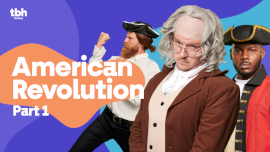 TBH (To Be Honest) History is a series of videos teaching about critical points in history through narration, images, and skits. The target audience is about grades five through twelve. Students younger than about ten will probably enjoy watching, but they probably won’t be able to keep up with the amount of information conveyed.
TBH (To Be Honest) History is a series of videos teaching about critical points in history through narration, images, and skits. The target audience is about grades five through twelve. Students younger than about ten will probably enjoy watching, but they probably won’t be able to keep up with the amount of information conveyed.
The skits are often silly, but they make serious points in a memorable fashion. Each video runs about ten to fifteen minutes.
There are eight videos in this series:
- American Revolution, Part 1
- American Revolution, Part 2
- French Revolution, Part 1: The Birth of Left vs. Right
- French Revolution, Part 2: The Disaster of Utopia
- Scientific Revolution
- The Industrial Revolution, Part 1: The Explosion Explained
- The Industrial Revolution, Part 2: Freedom vs. Control
- Russian Revolution: The Rise of Communism
The selection of topics reflects PragerU’s goal of educating all ages with information about influential ideas and philosophies. Much of this information is pertinent to current issues, although the videos usually leave it to their audiences to make the connections for themselves.
The videos about the American and French revolutions, for example, contrast the ideas, actions, and results of both revolutions. There’s a political point of view behind the videos that tends towards conservatism and libertarianism.
You might expect the videos to be supportive of Christianity, but they seem more libertarian in this respect, often treating religious figures as oppressors who want to protect their own authority. For instance, the video on the Scientific Revolution never mentions the Catholic Church’s funding of scientific work and the fact that several priests and monks are among those responsible for the scientific revolution. Instead, the Catholic Church is made to seem the enemy of science. Even so, this series of videos should be an entertaining way for children and teens to learn some important ideas along with some history.
Street Smarts
In the Street Smarts videos, two interviewers—one dressed as Uncle Sam—present young people with opportunities to earn money by correctly answering questions related to the U.S. government. There are about 30 videos in this series, which should be great for sixth-grade and above. In each video, five or more young people are individually asked a series of eight questions that usually require them to fill in the blank or choose from multiple-choice answers. For example, one of the questions asked on Street Smart: Laws in the United States asks, "Which group did the Framers of the Constitution designate to be the main legislative or lawmaking body of the United States?" They can choose from: a. The Supreme Court, b. Congress, and c. The President. Students win $5 per correct answer but can pay for clues or help if needed. The final question is worth $20.
Each video concludes with a PragerU-style summary of the main ideas covered in the video.
Around the World Series
This animated series for students in about fifth grade and up teaches about social, political, and economic issues with stories about specific countries. The content is quite substantial as each video explains the causes and results of various policies. These videos should hold the attention of adults, maybe even more than children. Fifteen videos are available thus far, with titles such as:
- Hong Kong: Keo Fights for Freedom
- Central Africa: Niyah Needs Energy
- North Korea: Learning the Truth
- Venezuela: Vivi's Life Under Socialism
How To Series
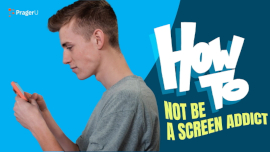 Created for teen audiences, the How To series addresses personal development issues using narration and skits. These videos each run about five minutes or less. There are quite a few videos in this series with more being added. Among those available thus far are:
Created for teen audiences, the How To series addresses personal development issues using narration and skits. These videos each run about five minutes or less. There are quite a few videos in this series with more being added. Among those available thus far are:
How To…
- Engage in a Conversation with Someone You Disagree With
- Be Resilient and Not Fear Failure
- Work hard and Enjoy It
- Manage Your Time
- Set Goals and Keep Them
- Deal with Peer Pressure
- Not be a Screen Addict
- Earn and Save Money
- Be Reasonably Green
- Prep for a Job
These videos are likely to be more successful vehicles for conveying this sort of information than instruction from parents.
Leo & Layla’s History Adventures
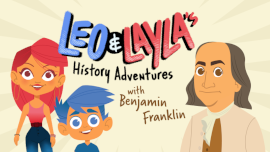 These animated, cartoon videos take Leo and Layla through time and distance to have conversations, usually with influential people, to learn about important ideas and events. For instance, they visit with the late Aleksandr Solzhenitsyn to learn the importance of freedom of speech. These videos run about ten minutes each. The amount of animation is limited compared to most other animated cartoons and stories. The conversations between characters are the main point, and they convey quite a bit of information. The level of information in some of them makes these videos useful for students beyond the target audience of grades three through five. They sometimes oversimplify complicated topics, but they are still useful for introducing topics to a younger audience.
These animated, cartoon videos take Leo and Layla through time and distance to have conversations, usually with influential people, to learn about important ideas and events. For instance, they visit with the late Aleksandr Solzhenitsyn to learn the importance of freedom of speech. These videos run about ten minutes each. The amount of animation is limited compared to most other animated cartoons and stories. The conversations between characters are the main point, and they convey quite a bit of information. The level of information in some of them makes these videos useful for students beyond the target audience of grades three through five. They sometimes oversimplify complicated topics, but they are still useful for introducing topics to a younger audience.
The titles in this series shown below all begin with Leo & Layla's History Adventures with... Just a few of the many titles in the series are:
- Pericles (the birth of democracy in Athens and the concept of civic duty)
- Galileo (scientific exploration)
- Queen Victoria (good manners)
- Adam Smith (market capitalism)
- Paul Revere (the importance of knowing about historical heroes)
- Frederick Douglass (slavery in the United States)
- President Ronald Reagan (the end of the Cold War)
- Aleksandr Solzhenitsyn (freedom of speech)
- Nuclear Niyah (the actual costs of environmentalism and renewable energy)
- Winston Churchill (facing fear and being courageous)
- Marie Curie (women shouldn't have to choose between family and career)
- The Wright Brothers (teamwork and cooperation)
Guess or Mess
Guess or Mess is a game show for children in grades three through five. Two students compete to answer questions while holding their hands in a bowl. The host dumps jars of food items (e.g., saurkraut, melted chocolate, tomato soup into their bowls, and some onto the contestants, with no clear connection to right or wrong answers. Between questions, the game host provides a substantial amount of historical information. These videos focus on American presidents and influential people such as J.P. Morgan, Ayn Rand, Andrew Carnegie, and Amy Coney Barrett. Videos run about 16 minutes and present excellent biographical and historical information amidst the silliness.
Otto’s Tales
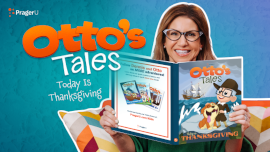 Otto’s Tales are for younger children, probably about kindergarten through third grade. In these videos, someone reads aloud one of the Otto’s Tales books that teach children positive values and virtues along with patriotism. Some of the stories are retellings of classic stories, and some are presented in rhyme. The videos use illustrations from the books along with some animation. Examples of just a few of the many titles in this series are:
Otto’s Tales are for younger children, probably about kindergarten through third grade. In these videos, someone reads aloud one of the Otto’s Tales books that teach children positive values and virtues along with patriotism. Some of the stories are retellings of classic stories, and some are presented in rhyme. The videos use illustrations from the books along with some animation. Examples of just a few of the many titles in this series are:
Otto’s Tales:
- King Alfred & the Cakes (individual responsibility)
- Marshall the Courthouse Mouse (how the U.S. Supreme Court works)
- 10 Steps to Freedom (how the United States came to be known as “the land of the free”)
- The Emperor’s New Clothes (the importance of recognizing and speaking up for the truth)
- Little George and the Cherry Tree (the value of honesty and bravery)
- Today is Christmas (the story of Christmas and St. Nicholas, urging charity and praising the value of the holiday for all)
Craftory
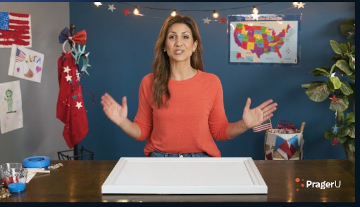 Craftory is a series of videos hosted by Jill Simonian to celebrate and recall important facets of history, holidays, and values by making craft or food projects. The focus is primarily American history and culture, although a few relate to Jewish history. For example, in American Flag Cork Board, Jill shows how to make a flag on a white corkboard. In Apple Pie, Jill shows how to make an apple pie baked in a microwave oven while discussing why apple pie is considered the quintessential American dish. In Thankful Jar, Jill shows how to make a Thanksgiving jar while sharing the story of the Pilgrims and the first Thanksgiving. In Ship in a Jar, Jill tells about Christopher Columbus while viewers make a simple model of a ship in a jar. And there are many more.
Craftory is a series of videos hosted by Jill Simonian to celebrate and recall important facets of history, holidays, and values by making craft or food projects. The focus is primarily American history and culture, although a few relate to Jewish history. For example, in American Flag Cork Board, Jill shows how to make a flag on a white corkboard. In Apple Pie, Jill shows how to make an apple pie baked in a microwave oven while discussing why apple pie is considered the quintessential American dish. In Thankful Jar, Jill shows how to make a Thanksgiving jar while sharing the story of the Pilgrims and the first Thanksgiving. In Ship in a Jar, Jill tells about Christopher Columbus while viewers make a simple model of a ship in a jar. And there are many more.
Some of the craft projects will be more practical to do than others, but the videos convey plenty of history even if you don’t do the crafts.
These videos are supposed to be for children, but adults will need to be heavily involved in most of the projects. The videos run fewer than ten minutes each, so you will need to pause them if you are trying to do the projects along with Jill.







